We’ve been traveling within China on trains, subways, buses, taxis and by foot. Tonight I thought I’d share a few observations about transportation.
High Speed Trains
When you think about getting somewhere quickly in the US, trains don’t come to the top of your list. Even the Amtrak Acela heading from Boston to Washington DC, some 450 miles takes 7 hours. It doesn’t take much longer by car. In contrast, the high speed train from Changsha to Beijing went 900 miles with 5 stops, and took 5.5 hours. That’s twice the distance in an hour and a half less time. The intermediate stops were every 45 minutes to an hour, and as we learned to our chagrin, as we missed our first attempt from Hong Kong, they allow 15 minutes for boarding and those trains pull out on time. Train speeds are displayed on the electronic display panels in the train, and the top speed I saw was 348 kmh—which translates to 215 mph. There are regular trains running from Hong Kong to Beijing with stops at various larger cities along the way. That’s a pretty clear north - south route. But there are routes that cover most of the country. The US has not made that kind of significant infrastructure investment since we developed the Interstate highway system under President Eisenhower, which is not nearly as fast or efficient.
The seats aren’t the most comfy chairs I’ve sat in, but do have overhead racks and good leg room and they recline and have tray tables, and USB and electrical plugs. A train attendant did come through on each leg of the trip to offer snacks, although it seemed that most people, including us, brought their own snacks. Our seat mate on the way to Beijing had ordered lunch and the attendant brought it by. Let me say, as the one seated next to him, that apparently eating with chopsticks requires a lot of extending your elbow into your neighbor’s space while eating…
The terminals aren’t fancy. The boarding areas are covered metal but otherwise open—same wavy roof design in the southern more tropical climates of Chenzhou and Changsha as it is in Beijing where temps today were in the 40-50 degree range (F.) (top left). The arrival hall is just a big open area—no seating. (Bottom left). The waiting area does have lots and lots of chairs and a selection of stores around the edges where you can get food (top right is Chenzhou, top center is Changsha). The board sign flashes green when boarding—for ten minutes, and then turns to red when boarding has stopped (bottom right).
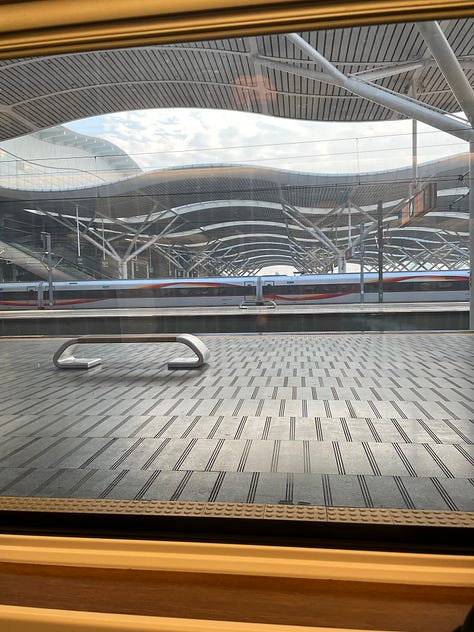
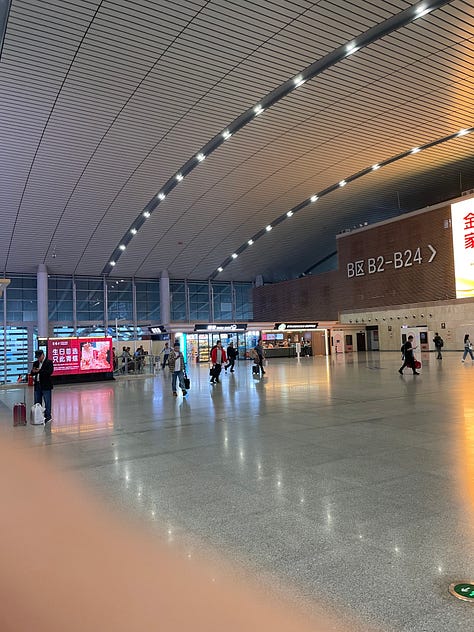
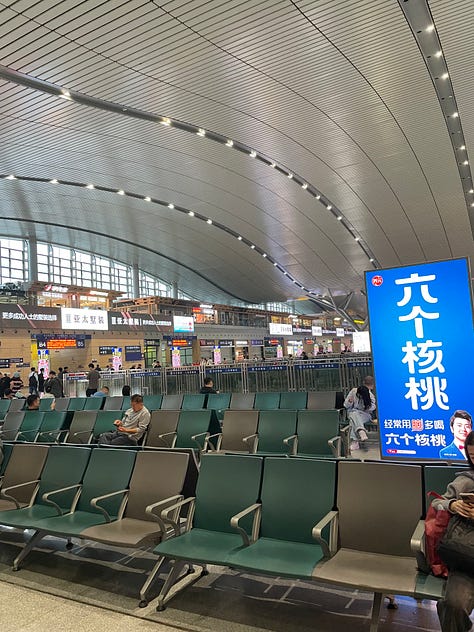
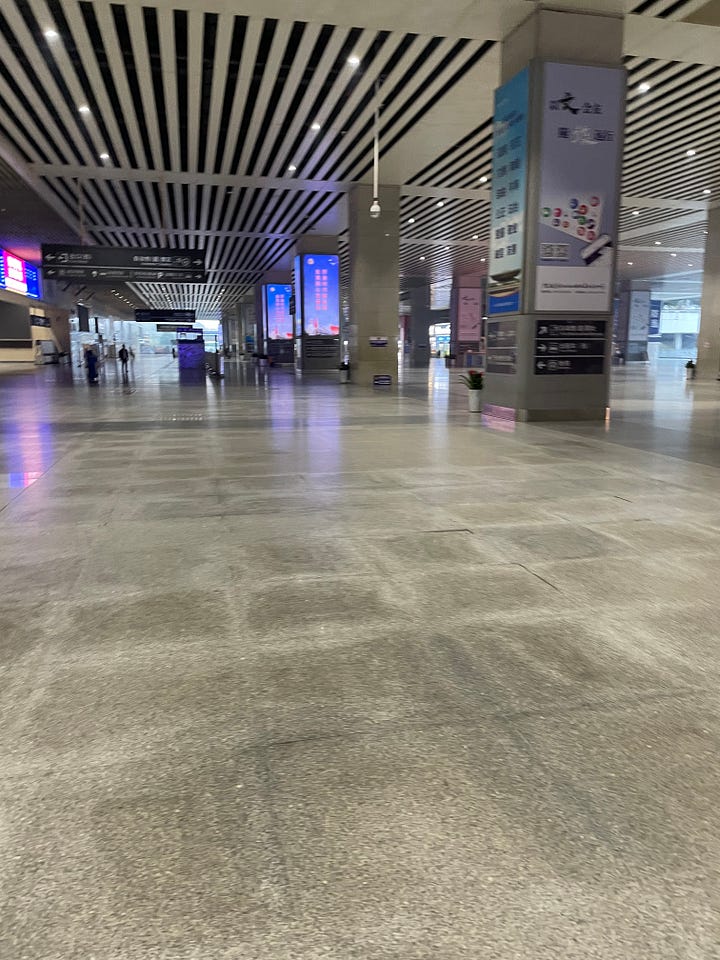
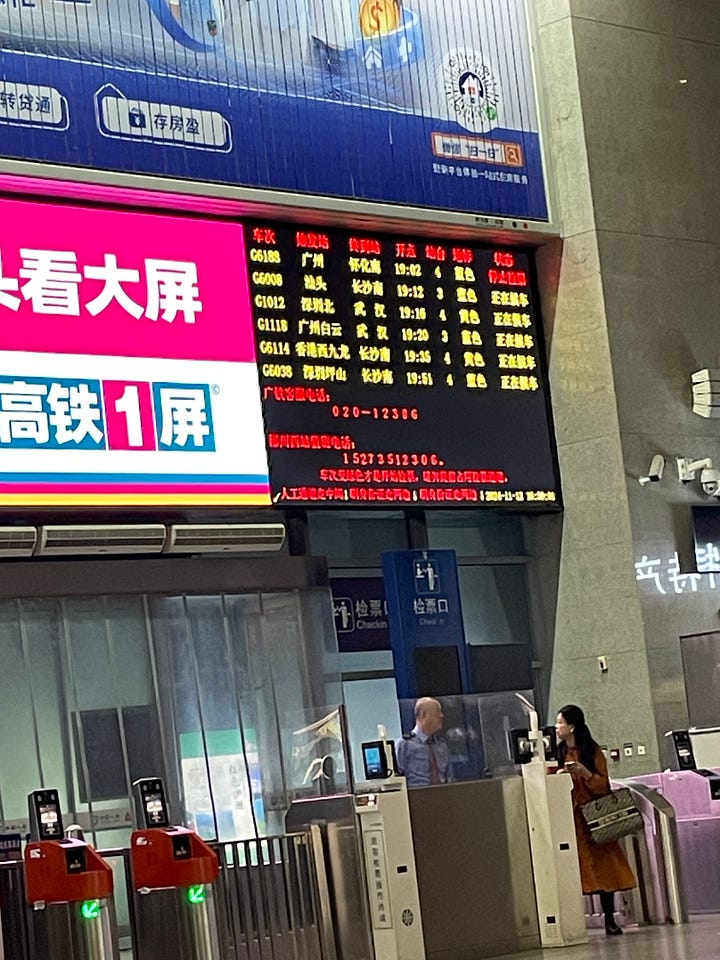
Subways
So, I think I saw something in the airport when leaving Boston about Boston having one of the earliest subway systems in the United States. Anyone who has ridden on the T in Boston knows that our age shows in the decrepitude of tracks, cars, and stations. Having been riding on subways built a lot more recently both in Changsha and now in Beijing, I can say that investing in transportation infrastructure is something China is doing a lot better. Beijing, of course, is lots bigger than Boston—the picture on the left is a public transportation route map, but it has at least 16 subway lines. The single trip fare in Changsha is handled via that blue plastic token in the middle photo. You scan it as you enter, and then put it in a slot when you leave. In Beijing they use plastic cards. The photo on the right is the subway map from Changsha.
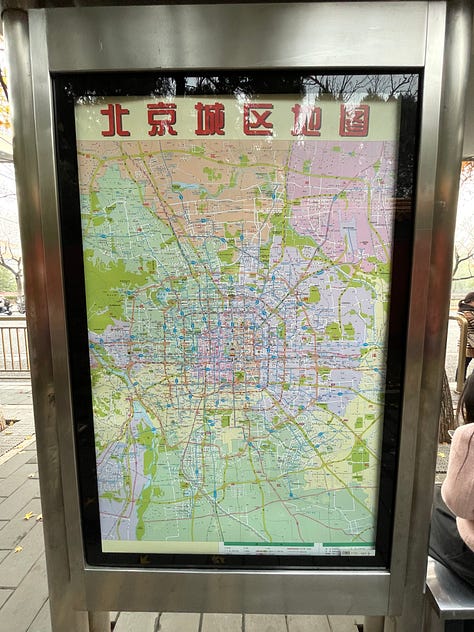
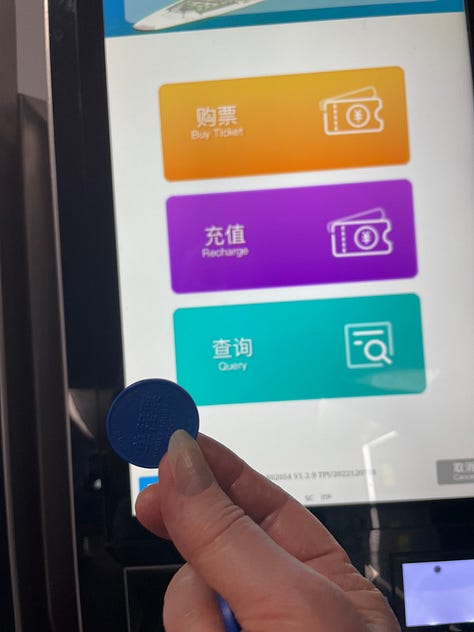
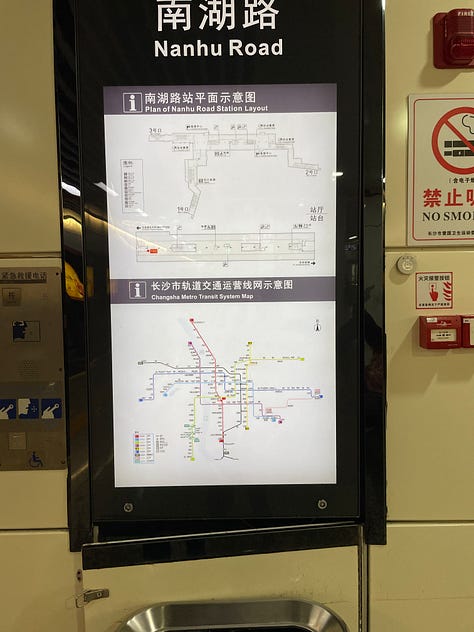
So the subway cars, stations, and tracks all seem fairly new and well maintained. Trains run often. Surprisingly, the subways in both Changsha and Beijing have signage and announcements in both Mandarin and in English.
What was more surprising, however, is that every time you get on the subway, you have to go through what we’d consider “airport” level security, with bags going on a converter, and people walking through a metal detector and getting wanded every time you come into a subway. Today near Tian’anmen Square, the security guard for the subway even scanned our water bottles.
Subway stations are very mixed in terms of accessibility—something I noticed when pulling my suitcase through them. Some have lifts, aka elevators. Most have escalators, but many have one or two sections that are only accessible via stairs. Twice on this trip a stranger has helped me by carrying my suitcase or duffle down the stairs. I give thanks for the kindnesses of strangers!
Subway cars are sometimes crowded. Several times people have looked at my white hair and offered me a seat, but while priority seating is marked, people don’t really pay a lot of attention. The subway has been been an inexpensive way to get around with a single trip costing 3 yuan / person (that = 42 cents). In Boston, a single trip is $2.40.
Walking
In October I averaged about 5,700 steps a day, according to the pedometer on my phone. This past week I averaged 16,210 steps a day, with a high of 22,487 on Nov. 8 when we were walking all around Hong Kong, and 18,521 today when walking around Beijing. Tori has mostly been navigating and she thinks nothing of walking 20-30,000 steps a day because that’s what she does in Boston. So I often send her off to do the extra loop around an area because my legs and feet (I will not show you a picture of the blisters on my feet—you’re welcome. I thought I had broken in the new shoes, but I guess not enough.)
The challenge in walking here are the scooters. We’ve nearly been run over by scooters a hundred times, which is to say nearly every time we venture onto a sidewalk, and certainly every time we are in a crosswalk. Scooter drivers feel free to ride on the street and on the sidewalk and in and out of the designated bike/scooter lanes. Some of them wear helmets, many don’t. A lot are carrying kids. Scooters also park on sidewalks and blocking intersections. Some of the scooters wear coats as in the photo below. This was in Changsha where it was quite warm—haven’t seen as many coats on scooters in Beijing. Maybe they are splash guards?
Navigation
In all of this, Tori has been doing an amazing job at translating Chinese signage, maps, and directions (I’m learning: These suffixes give some guidance: nan is south, xi is west, dong is east, bei is north.) Three things we have discovered as critical are a fully charged battery pack for our phones, an international calling plan with data, and signing up for the Chinese electronic payment systems, Alipay and WeChat. I think we both have traveled enough to have a sense of what to look for in getting around cities, but it’s been no small thing to do this with her rusty language skills and my nonexistent Chinese. The kindness of strangers has also been invaluable.
And sometimes, we have to rely on other signs to guide us.
Reflection
Isaiah 42:16: I will lead the blind by a road they do not know, by paths they have not known I will guide them. I will turn the darkness before them into light, the rough places into level ground. These are the things I will do, and I will not forsake them.
How do you or will we navigate unknown paths in these days? What do we need for these journeys?




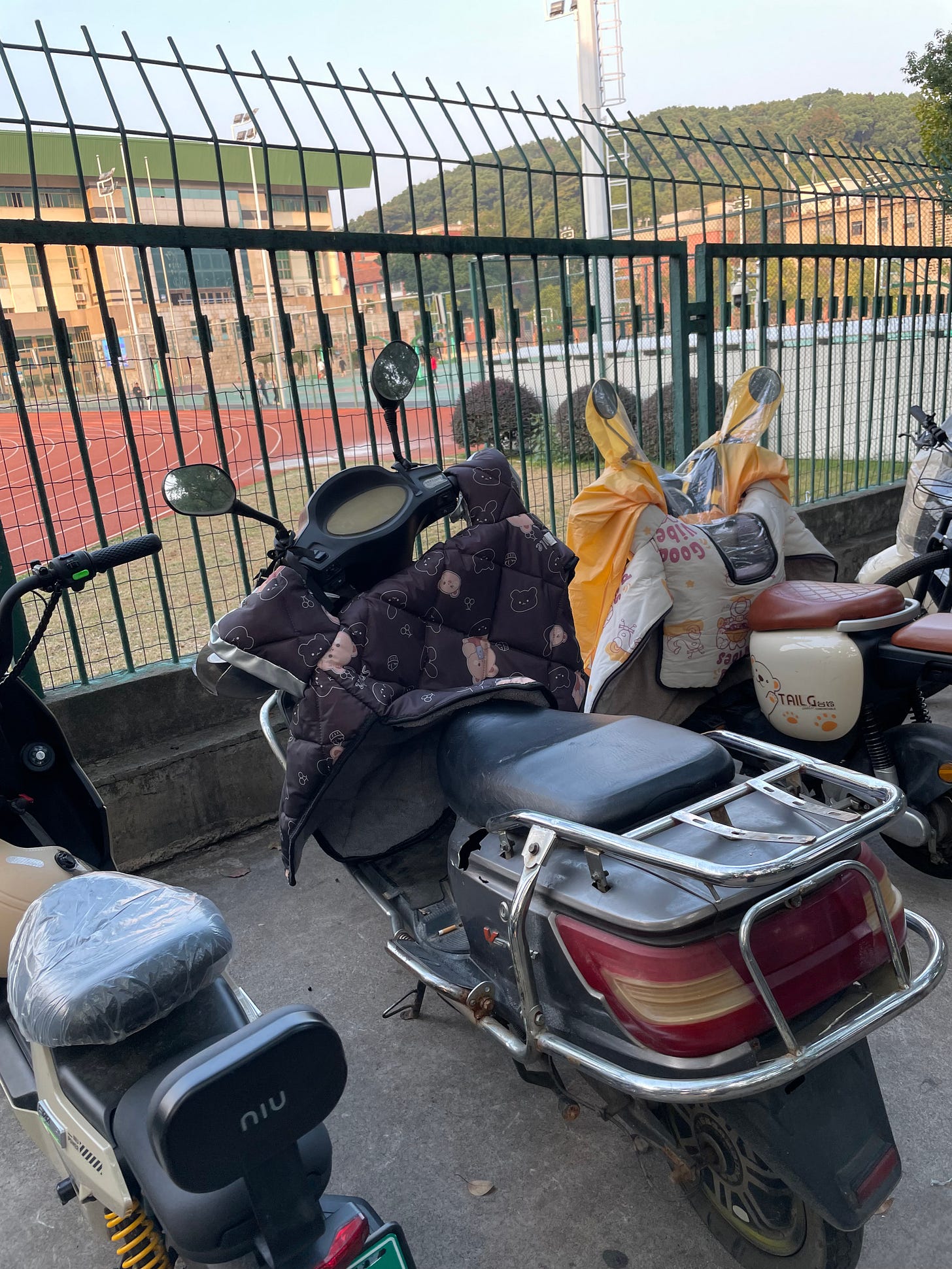
The cross-cultural adventure continues